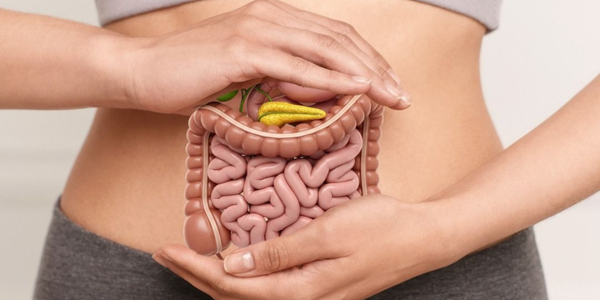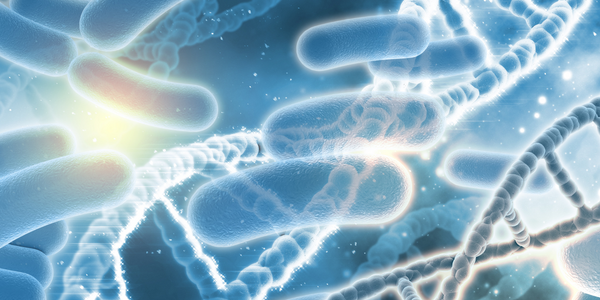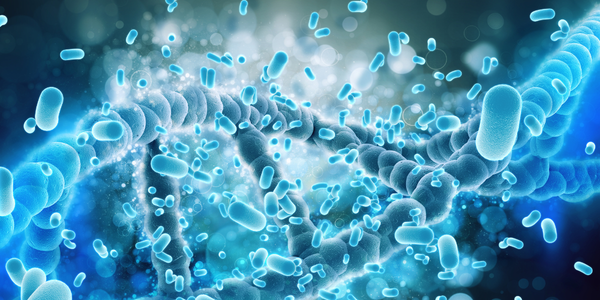Probiotics are live bacteria inside your gut. These bacteria are considered good for your body and overall health, as they eat off the bad bacteria in your body. You can get these good bacteria naturally from yogurt, cheese, pickled vegetables, kombucha and more. The use of probiotics has been relevant for a long time now, however, with more research in that area, probiotics are becoming increasingly available everywhere. In this article, we take a detailed look at the various strains of probiotics and how they influence our gut microbiota.

What are the Strains of probiotics ?
There are several probiotic strains available to choose from. We will be taking a look at them below, but before that let’s understand a little about the two most commonly consumed species of probiotics .
Bifidobacteria
This is the most common species of probiotics available in supplements. It helps in supporting your immune system, promoting digestion, protecting your intestine from harmful bacteria, helping the breakdown and absorption of lactose in your body and various other functions.
You can get this probiotic either through foods or oral supplements. It naturally occurs in yogurt, buttermilk, kimchi, tempeh, kefir and more.
Lactobacillus
Lactobacillus is the good bacteria that produces lactase in your body. Lactase helps in the breakdown of lactose in your body. It also produces lactic acid in your body that helps in fighting the bad bacteria. Lactobacillus is also influential in muscle growth and absorption of minerals. This species of bacteria is naturally found in your mouth, vagina, and small intestine
List of Probiotic Strains and Benefits

Having taken a look at the two main species of probiotics , let us now explore the various strains. But what are these probiotic strains? They basically refer to the genetic subtypes of the species. Each strain has a different function inside the body - you can find the names of these strains on food and supplement labels. It is written with the first letter of their species - for example - L. acidophilus or B. lactis. Let’s dive in!
1. breve: This particular probiotic strain helps in fighting various gut issues, such as diarrhea, colic, and celiac disease. It also helps with obesity, allergies, and neurological disorders. B.breve is also used as a prevention for the side effects of chemotherapy and various antibiotic treatments. It is found in your gut and the vagina.
2. animalis: Bifidobacterium animalis grows well in milk and helps in the formulation of milk products. It helps in improving immunity and gut function - by treating irritable bowel syndrome, constipation, and other gastrointestinal issues.
3. lactis: B. lactis comes from milk and is often found in the gut. It helps in fighting tumors, improving digestion, and boosting immune function.
4. longum: Another strain of probiotics found in your gut, B. longum helps in breaking down carbs and acts as an antioxidant.
5. acidophilus: this strain is found in our small intestines and the vagina - making both digestion and fighting vaginal bacteria easier. You can also find this strain in miso, yogurt, and kimchi.
6. reuteri: Found in the intestine and mouth, this strain helps in fighting oral bacteria and preventing tooth decay. It is also known to promote digestion.
Having mentioned the most common types of probiotics in this article, we may also like to inform you that there are some billions of different strains of probiotics in your gut. Different probiotic supplements contain different types and strains of probiotics. Wellbeing Nutrition's Probiotic + Prebiotic effervescent tablets contains six unique probiotic strains that help fight all your digestive issues. It is advisable to consult a doctor before adding a probiotic supplement to your diet if you are suffering from any chronic ailments, are pregnant or breastfeeding.
References:
- O'Callaghan A, van Sinderen D. Bifidobacteria and Their Role as Members of the Human Gut Microbiota. Front Microbiol. 2016;7:925. Published 2016 Jun 15. doi:10.3389/fmicb.2016.00925 (https://www.ncbi.nlm.nih.gov/pmc/articles/PMC4908950/)
- Why do lactobacilli dominate the human vaginal microbiota? (https://obgyn.onlinelibrary.wiley.com/doi/abs/10.1111/1471-0528.14390)
- Minami J, Iwabuchi N, Tanaka M, et al. Effects of Bifidobacterium breve B-3 on body fat reductions in pre-obese adults: a randomized, double-blind, placebo-controlled trial. Biosci Microbiota Food Health. 2018;37(3):67-75. doi:10.12938/bmfh.18-001 (https://www.ncbi.nlm.nih.gov/pmc/articles/PMC6081611/)
- Bifidobacterium animalis spp. lactis E.M.M. Quigley, in The Microbiota in Gastrointestinal Pathophysiology, 2017, https://www.sciencedirect.com/topics/medicine-and-dentistry/bifidobacterium-animalis
- Bifidobacterium longum counters the effects of obesity: Partial successful translation from rodent to human (https://www.thelancet.com/journals/ebiom/article/PIIS2352-3964(20)30552-1/fulltext)
- Mu Q, Tavella VJ, Luo XM. Role of Lactobacillus reuteri in Human Health and Diseases. Front Microbiol. 2018;9:757. Published 2018 Apr 19. doi:10.3389/fmicb.2018.00757 (https://www.ncbi.nlm.nih.gov/pmc/articles/PMC5917019/)
- Lactobacillus Acidophilus, University of Rochester Medical Center (https://www.urmc.rochester.edu/encyclopedia/content.aspx?contenttypeid=19&contentid=Lactobacillus)





























Leave a comment